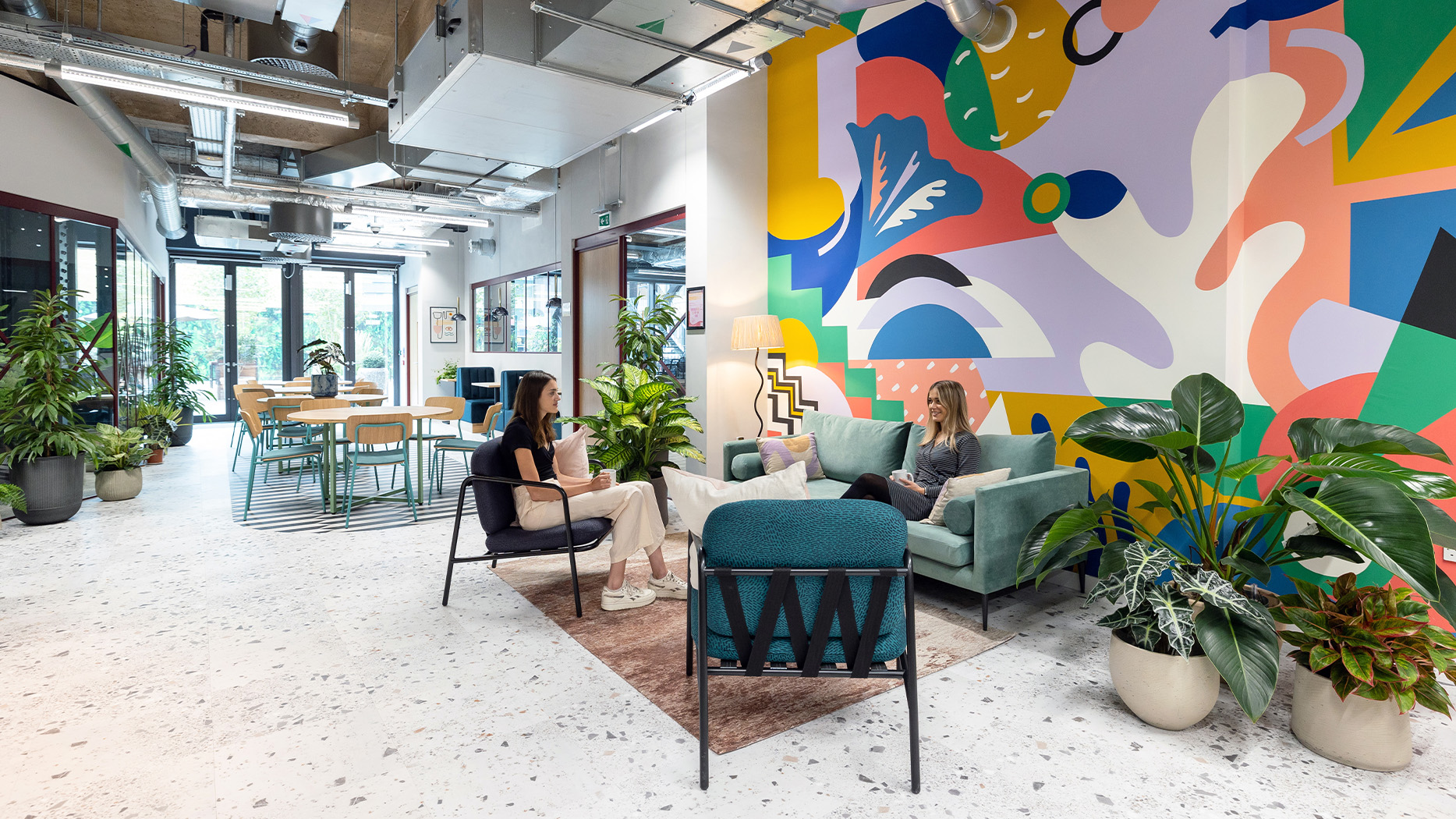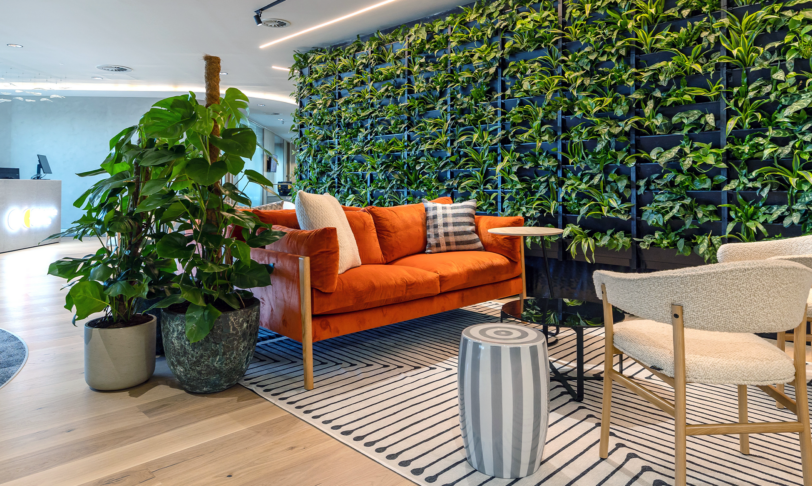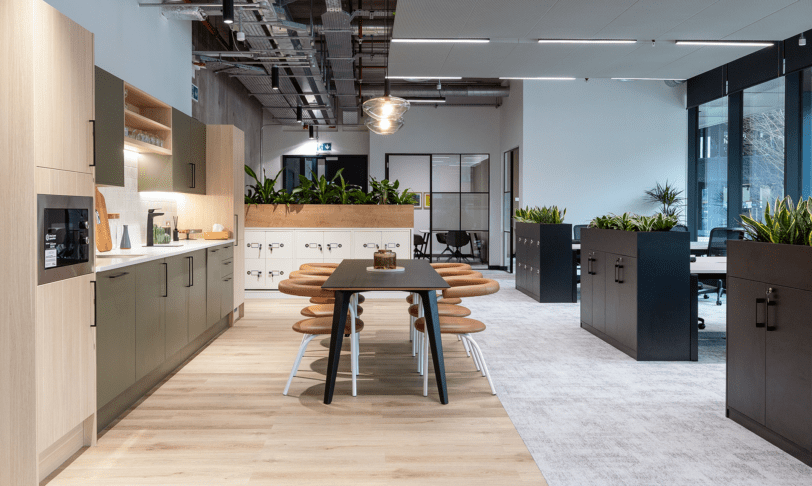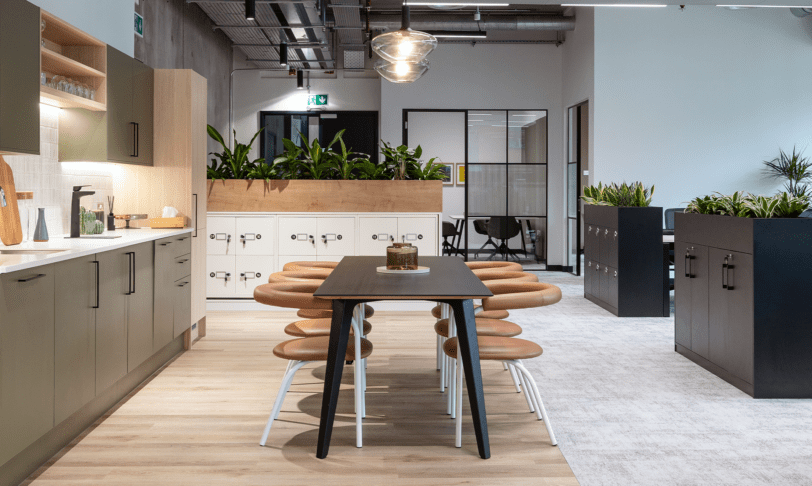Creating coworking spaces: designing for productivity & collaboration
The places and spaces that people work in have changed dramatically over the last few years. Hybrid and coworking layouts have helped do away with sterile cubicles and uninspired break rooms. Instead, coworking spaces have become vibrant hubs of activity, blending flexibility, community, and innovation. They have grown in popularity with startups, freelancers, and even large organisations seeking dynamic work environments. But what makes coworking spaces so special? And how do design elements foster the productivity and collaboration they promise?
The rise of coworking spaces
The concept of coworking spaces emerged from a need to redefine traditional work environments. With remote work and freelancing becoming mainstream, professionals began craving more than just a desk at home or a noisy coffee shop. They needed a place that balanced the structure of an office with the flexibility and creativity of working independently.
Today, coworking spaces offer more than just shared desks. By blending forward-thinking design with functionality, coworking spaces can empower people to flourish in their work and form meaningful connections. This article will explore the types of coworking layout spaces available, how they differ from traditional offices, and the thoughtful design features that make them hubs of productivity and creativity.
Coworking spaces vs. traditional offices
One of the most significant distinctions between coworking spaces and traditional offices lies in their flexibility. Traditional offices are often static, designed with fixed layouts and rigid workflows. Coworking spaces, by contrast, prioritise adaptability. Furniture is modular, partitions are movable, and spaces can transform from a quiet workstation to a vibrant brainstorming zone in minutes. This flexibility caters to the diverse and ever-changing needs of modern professionals.
Another key difference is the diversity of occupants. Traditional offices house employees of a single company, creating a homogenous environment. A coworking layout, on the other hand, brings together people from various industries and backgrounds.
Of course, this diversity and flexibility come with trade-offs. Coworking spaces may not always offer the level of control or exclusivity that bespoke traditional offices provide. For businesses with unique operational requirements, a custom-designed private office might still hold appeal. However, for many, the benefits of coworking outweigh these limitations.
Types of coworking spaces
Coworking spaces come in all shapes and sizes, designed to meet the diverse needs of today’s workforce. Understanding the different types available is crucial for businesses and individuals looking to find the right fit.
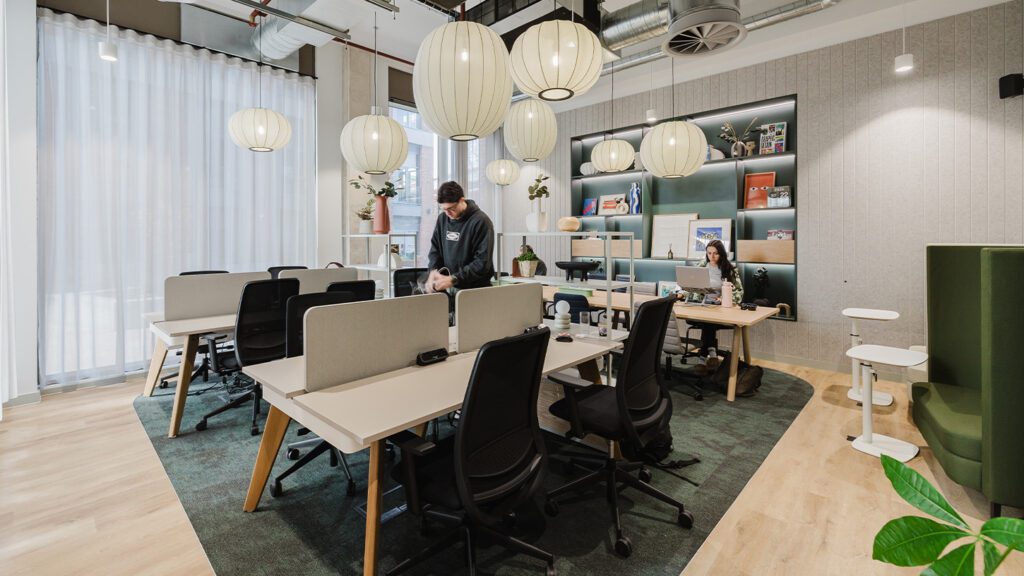
Shared workspaces
The quintessential coworking layout, shared workspaces, is designed with collaboration in mind. These open-plan environments are ideal for freelancers, entrepreneurs, and small teams who thrive on the energy of working alongside others. Picture a bright, spacious room with large communal tables, comfortable chairs, and ideally plenty of natural light. Shared workspaces encourage interaction, and the energy is often contagious. However, they may not suit those who require quiet or privacy for focused tasks.
Private offices in coworking spaces
For businesses or individuals needing privacy without losing access to the communal benefits of coworking, private offices are the perfect solution. These enclosed spaces offer the best of both worlds: a dedicated space for confidential work alongside the shared amenities and networking opportunities of the larger coworking hub. For example, financial advisors may benefit from the privacy of a secure office while enjoying communal spaces for client meetings or brainstorming sessions.
Niche coworking spaces
Specialised coworking spaces have emerged to cater to specific industries or interests. These niche spaces are tailored to particular needs, such as coworking studios for artists, tech-focused hubs with state-of-the-art equipment, or wellbeing-themed coworking environments complete with yoga rooms and meditation spaces. These types of coworking spaces create a sense of belonging among like-minded professionals while offering specialised tools and resources.
Benefits of coworking spaces
These spaces are often lauded for their flexibility and networking opportunities, but their benefits extend far beyond these surface-level advantages. Recent research highlights the profound impact coworking spaces have on employee wellbeing, collaboration, creativity, and overall job satisfaction.
1. Enhanced well-being and mental health
Numerous studies and anecdotal evidence have shown how coworking spaces have a significant positive impact on mental health and overall well-being. A study published in Harvard Business Review (2023) emphasised that professionals working in coworking spaces reported higher levels of psychological wellbeing compared to those in traditional office environments. The key drivers behind this improvement were autonomy, a sense of community, and access to diverse work environments. These spaces empower individuals to choose where and how they work, reducing stress levels associated with rigid schedules and environments.
Moreover, the International Journal of Environmental Research and Public Health (IJERPH) highlights that coworking spaces often incorporate design elements and amenities that contribute to mental health, such as natural lighting, ergonomic furniture, and areas for relaxation. The opportunity to step away from a desk and engage in casual conversations or participate in community events fosters a sense of belonging and combats the isolation that many remote workers face.
2. Increased collaboration and networking opportunities
The nature of coworking spaces means that they naturally attract a diverse range of professions and personalities. Where typical offices would have many of the same jobs or industries working together, the ecosystem within coworking spaces creates fertile ground for collaboration and innovation. According to a ScienceDirect study, this diversity leads to “cross-pollination of ideas” as individuals engage in organic knowledge-sharing and problem-solving.
A software developer might find themselves sharing a table with a graphic designer or a marketing consultant, sparking spontaneous collaborations and broadening professional horizons. These serendipitous encounters are a unique advantage of coworking spaces, fostering creativity and facilitating professional growth.
Beyond the networking capabilities from a business perspective, coworking enables and encourages community collaboration that reaches further than just the work being done in that space). As these environments promote wellbeing and mental health, so does a sense of community and exposure to new ideas. A coworking space is often-times a lynchpin for communities to gather around, voice important matters, or express themselves. An art exhibition by local artists on how gentrification has affected a community’s life, a talk on sustainable work practices, or an innovation hub for young and promising startups – coworking spaces can encourage all of these and more.
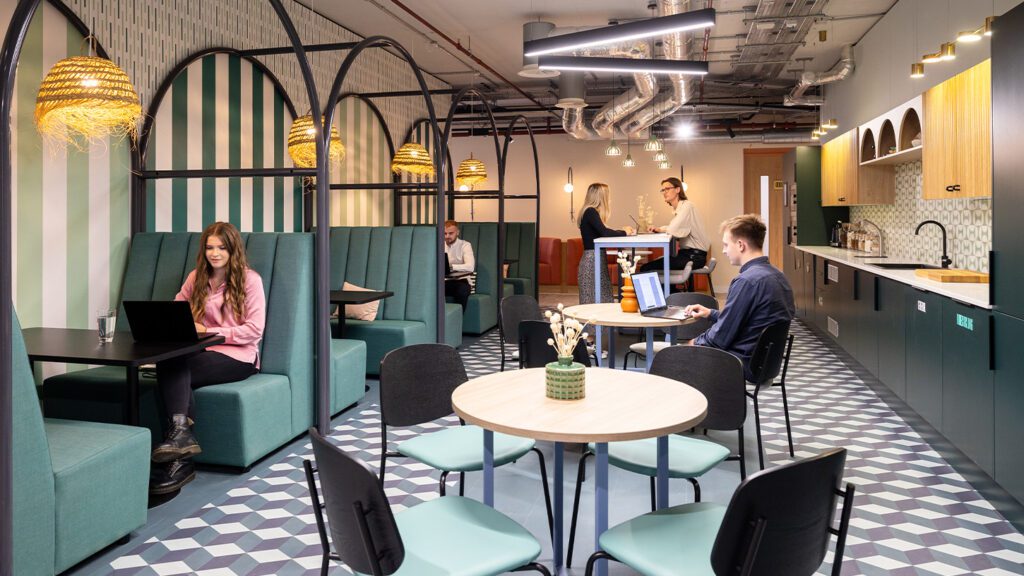
3. Greater job satisfaction and work-life balance
Research suggests that employees in coworking spaces report higher levels of job satisfaction. These coworking benefits are attributed to a combination of factors: flexibility, autonomy, and an engaging environment. The PubMed study of various papers highlights how coworking spaces allow professionals to create boundaries between work and personal life, a challenge many remote workers struggle with when working from home.
4. Opportunities for skill development
Owing to the communal nature of coworking spaces, they are also hubs for learning and development. Many spaces offer workshops, networking events, and access to mentorship opportunities. These events not only upskill members but also provide a platform for showcasing expertise. According to Knight Frank’s insights, coworking environments often create micro-communities where professionals can share knowledge, discuss industry trends, and even seek advice from peers.
5. Support for startups and small businesses
Startups and small businesses are among the greatest beneficiaries of coworking spaces. With affordable and scalable options, these environments enable fledgling companies to establish themselves without the financial burden of a long-term lease. The collaborative atmosphere also helps startups connect with potential partners, investors, and clients. The ResearchGate study notes that these interactions are crucial for business growth, particularly for organisations that thrive on innovative ideas.
6. Physical and cognitive benefits of thoughtful design
The physical design of these spaces plays a pivotal role in enhancing both physical and cognitive wellbeing. Many coworking spaces incorporate biophilic design principles, which emphasise natural elements like plants, well-lit spaces, and outdoor views. According to ScienceDirect, these elements reduce stress and improve concentration, helping professionals maintain focus throughout the day.
In addition to the calming aesthetics, people-focused furniture and diverse seating arrangements cater to various working styles, preventing physical discomfort and fatigue. Spaces designed for movement – such as standing desks, walking paths, or breakout areas – further promote physical health and prevent sedentary habits.
Challenges of coworking spaces
Despite all the coworking benefits, some spaces are not without drawbacks. The open-plan layout that encourages collaboration can also lead to distractions, especially for those who need quiet to concentrate. Noise-cancelling headphones and designated quiet zones can mitigate this, but they are not foolproof.
Privacy is another concern. While coworking spaces often provide private offices or meeting rooms, the communal nature of these spaces can make it challenging to maintain confidentiality. Businesses handling sensitive information must weigh this carefully.
Finally, space limitations can pose challenges, particularly in popular coworking hubs. During peak times, finding a suitable desk or booking a meeting room might require careful planning.
What makes a great coworking space in terms of design?
The design of a coworking space plays a pivotal role in its success. A thoughtfully designed space not only enhances productivity but also creates a welcoming atmosphere that encourages creativity and collaboration.
Communities are curated, and spaces are designed with a clear purpose – to attract specific types of businesses and professionals. From aesthetics and branding to layout and amenities, every element is intentional. Coworking businesses like Foundry and x+why use design and visual identity to shape their communities, appealing to scaleups, tech businesses, ethical organisations, and other niche industries. A strong design language communicates the space’s identity, ensuring that the right people and businesses feel aligned with its environment.
The importance of design
The design of a coworking layout is about more than aesthetics; it’s about functionality. A well-designed space strikes a balance between openness and structure, like offering both communal areas for interaction and private zones for focused work. Spaces must be designed with people in mind from the start. The success of a space and the happiness of those who work there are always contingent on its design.
Key design elements
One of the most important aspects of coworking layout design is flexibility. Open floor plans with arrangeable furniture allow spaces to adapt to different activities, from solo work to team workshops. Quiet zones and collaboration areas cater to varying work styles, ensuring inclusivity.
Comfort is equally crucial. From plush seating in lounge areas to sound-insulated pods for private calls, every design element should enhance the user experience. Multifunctional spaces, such as kitchens that double as casual meeting spots, add to the versatility of coworking hubs.
Additionally, coworking spaces are increasingly focusing on creating “destination” offices. These are spaces people want to visit, not just out of necessity but because they are inspiring and enjoyable. Thoughtful touches like artwork, themed rooms, or wellbeing amenities can elevate the experience, making the space a true community hub.
Beyond amenities like these, the post-covid world has also seen more of an integration of home comforts, community-building and networking events with workspaces. Coworking spaces should feel welcoming, yes, but great spaces encourage community. Great coffee, comfy couches and bean bags on one hand, and career-building and networking on the other – this mix is also what makes coworking spaces stand out.
Taking that sense of community even further, many coworking spaces are formed and designed around particular communities and spaces – they incorporate elements of local artists, organisations or movements. Being designed around their physical location – often a central part of an integrated and lively creative community – further encourages and builds community bonds. Coworking spaces therefore become more than just a place to do work, but a centre of communal growth.
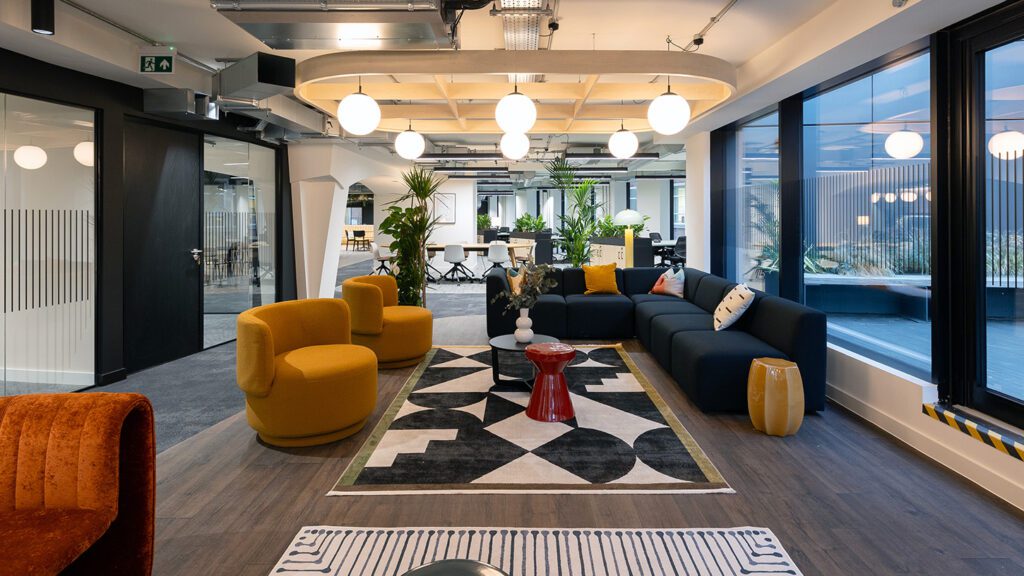
Choosing the right coworking space
Selecting the right coworking space involves more than just finding a convenient location. Businesses and individuals must consider several factors to ensure the space aligns with their needs.
The first question to ask is: What are your business’s needs? Some companies prioritise networking opportunities, while others focus on access to amenities like high-tech conference rooms. Understanding these priorities is crucial.
The size of your team is another important consideration. Solo entrepreneurs might thrive in shared workspaces, while larger teams may require private offices or a hybrid setup. However, this does not mean that larger organisations don’t need or won’t also benefit from coworking spaces, so it’s essential to think about growth plans. Choosing a space that can accommodate expansion can save time and resources down the line.
Company culture should also influence your decision. A coworking space with a laid-back, creative vibe might be perfect for a design studio but less suitable for a law firm requiring a more formal atmosphere. Landlords and developers looking to create new spaces should also consider the clientele they wish to draw in or cater to. Lastly, consider whether the space fosters collaboration. If teamwork is central to your operations, look for features like open layouts and shared breakout areas.
Best layouts for coworking spaces
A coworking layout and space can significantly impact how people work and interact. Adaptable office layouts are particularly effective, as they change to different work styles and activities. Movable partitions, modular furniture, and multifunctional rooms ensure the space remains versatile.
It may seem like an efficient layout and maximum ROI plan means covering as much available floor space as possible with desks – or keeping communal areas small – but the magic of coworking spaces is that the interaction and engagement tenants experience actually means more retention and longer-term ROI. People will return for the thoughtful kitchen, the space to organise events and the consideration behind a space not crammed with desks. It’s the social spaces and cool corners that build community and make people want to stay.
Dynamic office design takes this a step further, incorporating elements that encourage creativity and interaction. Lounge areas, informal meeting zones, and breakout spaces create a relaxed environment where ideas flow freely. These spaces often feel less like traditional offices and more like vibrant communities, and that is the goal.
Balancing private and shared spaces is also critical. While open-plan coworking layouts are great for collaboration, they must be complemented by private pods or quiet zones for focused work. This hybrid approach ensures the needs of all users are met.
Coworking spaces as hubs of innovation
Coworking spaces are more than just workplaces – they are hubs of innovation, collaboration, and community. By combining thoughtful design with flexibility and inclusivity, these spaces cater to the evolving needs of modern professionals. Whether you’re a freelancer seeking inspiration, a startup looking to scale, or an established business embracing new work trends, a well-designed coworking space offers endless possibilities.
In a world where work is no longer confined to traditional offices, coworking spaces represent the future. If you want to collaborate on your workplace’s future, reach out to Interaction to see how we can help you achieve a thriving space.
To find out more about our office design and fit-out services, Say hello by scheduling a chat with Charlie our Relationship Manager, signing up for our newsletter or downloading one of our industry whitepapers for additional guidance.
